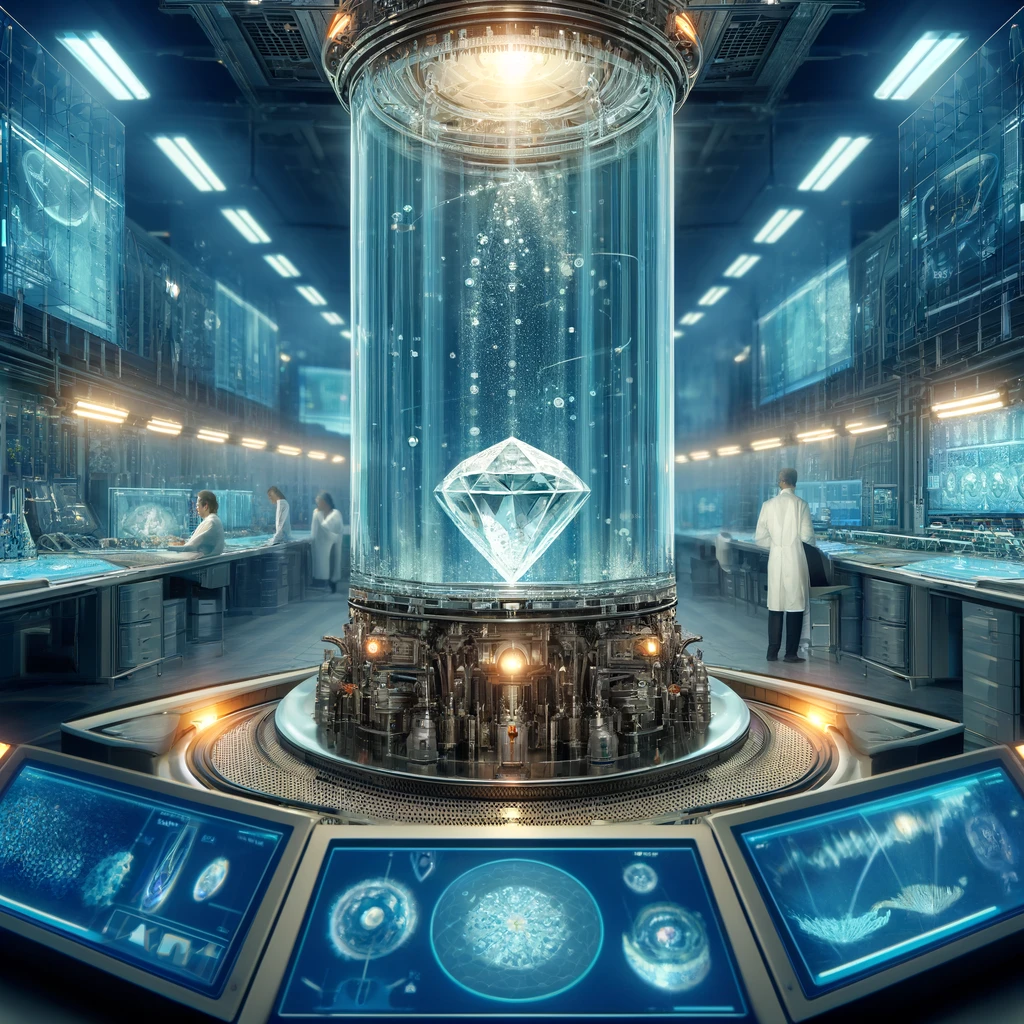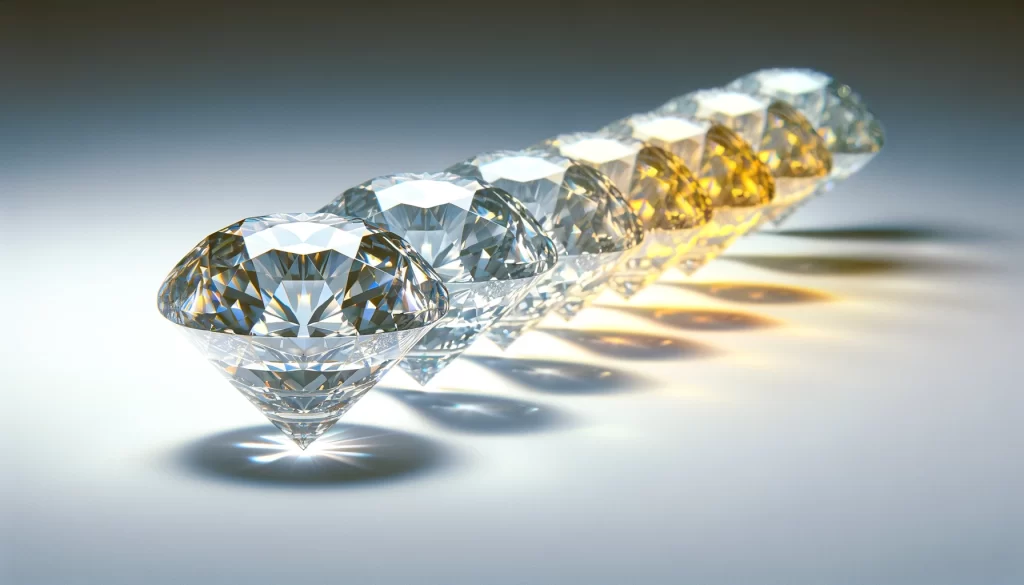Lab-made diamonds are shaking things up in the world of gems, getting thumbs-ups and raised eyebrows all at once. These little miracles of science look just like natural diamonds. The same sparkle and chemical composition, the big difference?
Lab-grown diamonds are created in a controlled lab environment rather than extracted from the Earth. As popularity rises, it’s time to dig into the details of a lab-grown diamond.
Pros and cons of lab-grown diamonds

Pros
- Ethical sourcing: Free from the ethical issues of diamond mining, such as worker exploitation of workers and child labor.
- Environmental friendliness: Less ecological damage compared to mining, though dependent on energy sources used in production.
- Affordability: Generally cheaper than natural diamonds, making high-quality gems more accessible. (A natural 1-carat can be anywhere between $1800 – $12000. Lab grown 1-carat averages around $400-$4000. The price depends on many different factors such as cut, clarity, and color. In most cases, the lab-grown will be the less expensive option.)
- Quality and purity: Possibility of fewer imperfections and higher clarity due to controlled production processes.
- Clear origin: Consumers know exactly where their diamond comes from, avoiding the stigma of blood diamonds.
Cons
- Perceived value and resale: Often viewed as less valuable than natural diamonds, affecting their resale price.
- Energy consumption: Even while lab-grown diamonds are less harmful to the environment than diamonds mined the old-fashioned way, they still require a great deal of energy. (Technological breakthroughs are gradually lowering their carbon footprint.)
- Market saturation risks: Increased accessibility and efficiency in production could lead to saturation, potentially lowering their value further. (If this continues the diamond will lose its exclusive feeling)
- Lack of natural history: Lab-grown diamonds lack the unique quality found with natural diamonds. As well as the earth’s ancient history, they lose out on the mystery of being created deep beneath the earth over billions of years. Which is a significant component of the appeal of natural diamonds for many.
Are lab-grown diamonds real?
Make no mistake lab diamonds are the same chemical composition, meaning they’re 100% real diamonds.
According to Blue Nile and the Federal trade Commission, lab-grown diamonds are not considered synthetic. Rather genuine diamonds but sellers must warrant buyers that the diamond is lab-grown and not natural.
Diamonds manufactured in labs have the same chemical composition as diamonds found in nature. Made from real carbon atoms arranged in the characteristic crystal structure of diamonds. Their chemical makeup is identical to that of natural diamonds. Lab-grown diamonds are produced in a controlled setting that is similar to what is found on Earth.
The main difference is where they came from while natural diamonds take between one and three and a half billion years to mature in the earth’s mantle. Whereas lab diamonds on average are produced just two to four weeks on average.
Reasons people are against lab-grown diamonds
People may be against lab-grown diamonds for several reasons, focusing on authenticity, value, tradition, and environmental concerns:
- Authenticity and Value: Some view natural diamonds as more genuine and valuable. Due to their rarity and the natural processes that create them over billions of years. Lab-grown diamonds, despite being chemically identical, are seen by some as lesser due to their artificial production method.
- Tradition and Sentiment: Diamonds have deep traditional and sentimental significance, especially in engagements and major life milestones. Lab-grown diamonds, being a recent innovation, may not carry the same emotional weight or historical significance for some individuals.
- Investment Concerns: Natural diamonds are often considered a stable investment that can retain or increase in value over time. There’s a perception that lab-grown diamonds will not hold their value in the same way. Making them less appealing to those looking at diamonds as a financial investment.
- Environmental Skepticism: Despite claims to the contrary, lab-grown diamonds are thought to be more ecologically friendly. Significant energy is still needed for the production process. Leading some to question if utilizing renewable energy sources is going to help the environment. Leading some to question the overall environmental benefit if renewable energy sources are not used.
- Market Impact: The arrival of lab-grown diamonds on the scene has stirred up quite a bit of unease. Concerns are growing that the market’s flood of diamonds might drastically reduce the value of all diamonds, whether mined from the earth or lab-created. There’s also a lot of concern about the harm this could do to the economies of places where mining natural diamonds is a major part of their economy.
- Uniqueness: People value natural diamonds for their unique characteristics and imperfections, with each telling a distinct story. Some individuals prefer the individuality of natural diamonds and view lab-grown alternatives as less unique because of their mass production in a controlled environment.
In essence, opposition to lab-grown diamonds stems from a mix of perceived lack of authenticity, concerns over value and tradition, environmental questions, economic impacts, and the desire for uniqueness.
Do Lab-Grown Diamonds Change Color or Get Cloudy Over Time?
Similar to their natural counterparts, lab-grown diamonds are highly resilient and, in normal circumstances, do not cloud or change color over time. Their physical, chemical, and optical qualities are the same as those of natural diamonds since they are made up of carbon atoms arranged in the same crystal structure.
In simple terms, lab-grown diamonds are just as strong and resilient to damage as natural diamonds.
Any diamond, whether mined or created in a lab, could eventually appear murky or change color. However, these effects typically occur as a result of surface damage, dirt or oil buildup, or exposure to harsh chemicals rather than internal alterations in the diamond. Whether a diamond is natural or created in a lab, it can preserve its brilliance and beauty with regular cleaning and maintenance.
Key Points
Lab diamonds, which are chemically identical to natural diamonds, are indeed real diamonds, not synthetics or imitations. When it comes to price, lab diamonds typically offer a more affordable option than natural ones, though the exact cost can vary with the diamond’s cut, clarity, and carat. While lab-grown diamonds don’t share the rich, vibrant history of natural ones, society is quickly embracing them.
- Lab diamonds have the same chemical makeup as natural diamonds.
- Lab diamonds are considered real diamonds, not synthetic or fake.
- Lab diamonds take, on average, 2-4 weeks to be created.
- On average, lab diamonds are less expensive than natural ones (depending on the cut, clarity, and carat).
- Lab diamonds do not get cloudy or change color over time.
- People are against lab diamonds due to tradition and the potential damage they can to do the diamond market.
